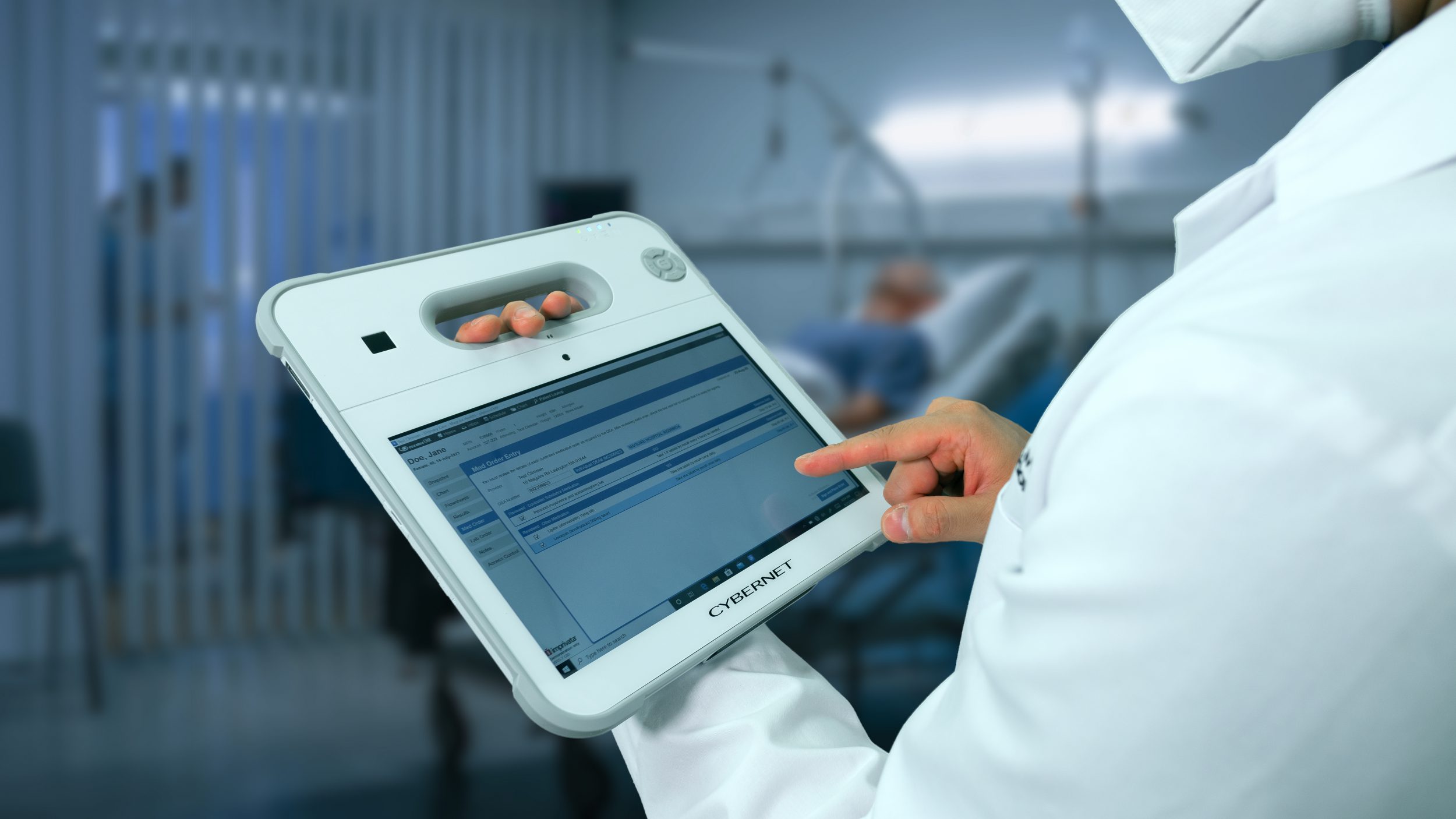Technology is constantly coming and going within healthcare. Some of it, like medical grade computers and patient wearables, stay in the mainstream and enhance patient care, while others, like EHRs and artificial intelligence, need a little more time in the oven.
And while this may sometimes feel like a case of “throw anything at the wall and see if something sticks,” it’s just par for the course. This cycling in and out of new technologies is how we continue to advance healthcare into the future, empowering both care providers and patients. And currently, there’s a new piece of tech that’s come up to bat in the healthcare space: Augmented Reality.
Many are beginning to question whether this branch-off of virtual reality can truly empower patient care or if it’s just another fad. Fortunately, many seem to think the former as is noticed in Business Wire’s market projection. According to their predictions, the AR market is set to reach $10.82 billion by 2025. Promising to say the very least, but how can healthcare ride this expected wave of innovation?
What is Augmented Reality?
Article Guide
Augmented reality is a method of superimposing images, text, video, and sound over the real world, often for the purpose of delivering information to whoever is wearing the AR hardware. This is not the same as virtual reality where entire environments are rendered for users to interact with. Augmented reality, as the name implies, simply augments the environment that we can already see by displaying visual elements.
Despite how far off something like augmented reality may seem, it’s actually something we have access to and use readily today. In 2013, we saw Google Glass enter the scene and, while it didn’t quite take off for consumer use, many factory floors saw promise in its ability to display information in real time and use it regularly. Just 3 years later we even saw Pokemon Go become a global phenomenon (despite the app’s popularity fizzling out a few weeks later.)
Still, the question remains, does augmented reality have a home in healthcare? And, if it does, do its applications have the legs to make lasting impacts in the industry?
What are the Uses for Augmented Reality in Healthcare?
While use cases for augmented reality in healthcare haven’t reached the mainstream, there are definitely some facilities looking to lead the charge. Bay Area Hospital, North Bend Medical, and a few more locations in Oregon have already begun an initiative to assimilate AR tech into their operations.
Using AR headsets and smart devices such as smartphones and medical tablets, the healthcare providers are able to share their computer screens and critical information to first responders on the scene of an emergency. Using this technology, physicians can even examine a patient remotely through a feed of what the first responder sees through their headsets. The program even allows for the physician to circle spots on the feed that the first responder can observe and then focus in on for a better look.
For more approachable applications of augmented reality in healthcare all you need to do is open up the app store. Windows, Android, and Apple devices have access to apps like AR Anatomy 4D and Complete Anatomy that provide medical students and professionals with 3D models of skeletal and nervous systems, organs, and more for observation. Many of these applications can even project images of organs and bodies affected by specific conditions. Not only does this aid trainees without cadavers, it also helps patients interested in interactively learning more about their conditions.
Future Applications for Augmented Reality in Healthcare
The biggest selling point of augmented reality in healthcare is the potential to give doctors, surgeons, and first responders access to real time patient information and data in a faster, more accurate way than ever before. We already see a hint of what could come with the healthcare providers in Oregon we mentioned above, but what else can we look forward to if that potential is realized?
Augmented Surgery
Primary care physicians and nurses can surely benefit from real time data, but surgeons stand to see some of the more exciting developments an AR program can provide. In the future, AR could allow surgeons to look over projected models of a patient’s anatomy constructed by their MRI and CT scans inputted into an AR headset. Using this model, a surgeon could hypothetically visualize bones, muscles, and organs before even making their first incision.
Aside from studying a patient before a procedure, if the technology is further refined, this model could even be projected over the patient’s actual body, giving the surgeon an inside look of the patient on their operating table, exponentially increasing the precision of cuts and incisions.
Couple this with receiving real time updates on vitals and patient reactions and it’s easy to see just how much value a truly actualized AR system could bring to the operating room.
Augmented Diagnosis
One of the most frustrating feelings in the world is the feeling of being unable to communicate. It’s a feeling we all experience as crying children when we lack the ability to speak and it’s something many patients continue to experience when they mistakenly gauge their symptoms to a physician. Many patients will either overstate or underplay the severity of their symptoms which usually results in doctors either misdiagnosing or sending a patient home thinking they’re fine.
Fortunately, ophthalmology has already taken strides towards combating this with augmented diagnosis. Apps like EyeDecide allow doctors to display simulations of a person’s vision that’s suffering from a specific condition. Different conditions like cataracts and AMD can be simulated, giving patients a more accurate description of their symptoms for diagnosis as well as a literal glimpse into what their future vision could look like if they’re condition persists, motivating them to follow instructions for treatment.
What Tech is Needed Now and in the Future?
AR sounds like an intense, incredibly complex system, and that’s because it is. Displays, sensors, gyroscopes, there’s a hefty amount of specs necessary to even consider AR applications. Fortunately, a lot of this hardware is already outfitted into the phones and tablets we use daily!
As far as the AR applications that already exist, having a tablet or medical-grade computer grants you access to all of them. In addition to that, they will also provide antimicrobial* properties to protect the computer casing from deterioration and degradation. If they’re baked into the plastic of the device itself it won’t rub off after several disinfections.
As far as future applications we could be seeing in the operating room, having tablets with a fanless design will ensure the device isn’t circulating harmful bacteria and contaminants through the air while the surgeon receives real-time insights on their patients.
Augmented Reality: Worth Keeping a Pulse On
Only time will tell if augmented reality in healthcare goes the way of Google Glass or Pokemon Go. Regardless, the industry definitely sounds like one to keep a close eye on. For more information on the kind of technology you’ll need to kick-start an AR program in your own facility, contact an expert from Cybernet today.
Best Medical Tablets for Healthcare
August 11, 2021
We are well into the digital revolution in Healthcare. Gone are the days of clipboards and storage rooms filled with folders of handwritten patient records. Medical Tablets are now the standard way medical data is…
0 Comments6 Minutes
How Rugged Tablets Are Used In Healthcare
April 16, 2016
The introduction of rugged tablets into the marketplace has helped to improve the services provided by a variety of industries, but these devices have added significant value to the healthcare field. Tablets have…
0 Comments4 Minutes
You Can't
Learn from a Pop-up
But we can deliver knowledge to your inbox!
We dive deep in the industry looking for new trends, technology, news, and updates. We're happy to share them with you.
Knowledge, News, and Industry Updates Right in Your Inbox




